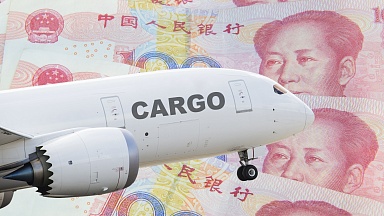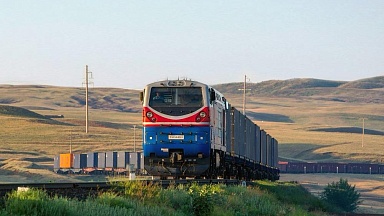RMD CEO Jan Lindqvist discussed the technology with our sister publication RailTech. The company is currently developing innovative sensor systems that use sensors onboard regular rolling stock, to provide real-time insights into the state of railway tracks, wheels, and trains. The Swedish company has been commissioned by the Swedish Transport Administration (Trafikverket), the government agency responsible for the long-term planning of the transport system, through an innovation tender. The aim is to complement today’s infrequent infrastructure inspections by utilising rolling stock equipped with RMD’s Performance Measuring Units and using machine learning to improve decision support for infrastructure maintenance.
Gap in Monitoring «Normally, you have an inspection car measuring the track with advanced measuring tools. But our contract with Trafikverket is to develop a system that we can use with normal rolling stock, using our sensors. They can send information relating to the state of the tracks, and send it back to traffic management when something is abnormal. Then they can opt to stop the traffic if needed for example,» explains Jan Lindqvist. «This is a new way of doing things, as you can get a much higher frequency of analysis and continuously get estimates of their condition.» This thereby facilitates condition-based maintenance.
Traditional railway infrastructure inspections occur at infrequent intervals, typically once a year in Sweden. The limitations of this sporadic approach have been evident, as a lot can transpire on the tracks during that time. This gap in monitoring has prompted the need for a more proactive approach to ensure both safety and efficiency. «We are not replacing maintenance cars,» stresses Lindqvist, rather, RDM hopes to supplement them. Indeed, «If you have trains running on a part of track every day, or almost every day, you can get a good feel for the condition of the tracks, especially when dealing with harsh weather conditions. If you can check the tracks and identify trends using normal trains equipped with sensors, that is a more reliable, safe, and economical way of doing things,» stresses Lindqvist. Continuous monitoring for enhanced safety and efficiency Railway Metrics has developed a range of sensors to monitor various aspects of the railway system. «The performance monitoring unit (PMU) is the main sensor and unit. It detects wheel flats and wheel defects, which can be a cause of derailment,» explains Lindqvist. The PMU can also monitor track stability and alert the driver in case of a derailment, significantly reducing the risk of infrastructure damage. Additionally, «It is also the communication centre for other sensors. It sends the data to the server, and to a dashboard,» adds Lindqvist, citing the recent Gothard tunnel derailment as an example: «The train was running for 8 kilometres before the driver understood that there was a derailment.» With onboard sensors sending data to a dashboard that the driver can see, RMD hopes to help avoid such situations in the future.
Other sensors are currently being developed by RDM. «The main sensors that you see include derailment, wheel flats, instability, track settings, geofencing, trains on tracks...» For instance, «Train consisting/ rack, since «Before you can run a train you must communicate to the authorities what order the wagons are in. This could be done automatically with this unit», explains Lindqvist. The Pantograph Sensor focuses on assessing the maintenance status of overhead electric lines. This is being developed in conjunction with Trafikverket. Furthermore, the company developed a Driver behaviour and energy index. «This can tell you about the way the driver drives. Are they breaking a lot, for example? Some drivers use more energy than others on the same train and track, so it can be interesting to know this. This is the kind of thing we can do easily,» adds Lindqvist.
The list of sensors and possibilities doesn’t end there. Wheel Sensors will be able to measure wheel profiles. «Kingpin locks are a sensor that sees if the trailer is locked to the wagon. It’s a safety sensor. We are also developing a sensor that measures the temperature of the bearings, which is also sending that data to the PMU,» expanded Lindqvist. The Railway Camera is designed to improve the safety of train reversals, by supplanting a signalling man equipped with a radio, since «that is a very dangerous situation to be in», according to Lindqvist. Two customers are already running with it as a proof of concept. The combination of these sensors ensures comprehensive data collection for a holistic view of the railway infrastructure. The data picked up by the various RMD sensors is shared with a dashboard for customer use.
«Teaching machines to use the data in the right way» Continuous data collection and analysis are vital in understanding the state of the railway system, ensuring safer journeys and preventing costly derailments. Key to this approach is the use of machine learning. It plays a pivotal role in understanding the vast amount of data collected by Railway Metrics. It facilitates anomaly detection, clustering of new data, and the training of models for problem classification. «Machine learning plays a big part in understanding the data that RMD collects. Among the tasks, machine learning is used for anomaly detection and clustering of new data. This allows us to categorise and understand what type of faults we are working with. We also use supervised learning in order to train our models for classification of problems detected with our sensors,» according to Lindqvist.
The success of machine learning is closely tied to the volume and quality of data collected. «More than standardised units of measurement, the most important thing, in my opinion, is a common interface, how you send data. That’s important,» explains Lindqvist, «The data that comes from these sensors is used by the railway undertaking, the railway company, the infrastructure manager, and the maintenance organisations. So you have different data for different clients. That’s really the key to this, to our sensors. They are designed for a diverse client base. This means that it will be more economical for everybody involved.»
The goal is to expand these capabilities to detect multiple types of problems with even higher accuracy. «The important thing with machine learning is really how much data you get, and how you use the data, and teach the machines to use the data in the right way,» elaborates Lindqvist. «This means that it is very important to understand running dynamics. We are using engineers that understand running dynamics and we are trying to work with young people skilled in the areas of software and machine learning. So, you need to combine the two expertise.»
Data Sharing The question of data ownership arises in this new era of continuous monitoring, as highlighted by Lindqvist: «Now everyone wants to own the data. From our point of view, sharing data will make the railways more safe and economical so we need to be humble regarding who owns it.» This underscores the pressing need to find a balance between proprietary rights and the collective benefit of data sharing within the railway industry.
«I do believe that the person paying for the data should have the data,» explains Lindqvist, «Of course, I understand that some data cannot be shared like the maintenance data railway operators have on their wagons. However, if the railway companies send data on the tracks to the infrastructure manager, those are two different things. I think they should be kept apart,» he continues. «Let’s say that a railway undertaking puts on our sensors and pays us for that, our suggestion is that if they share the data with the infrastructure owner or manager, the cost for running on the track (the track fee) should be reduced. This gives an incentive to share data. I think everybody needs to share data here.»
This approach, as seen through Lindqvist’s eyes, not only encourages data sharing but also fosters collaboration among railway companies, infrastructure managers, and maintenance organisations, ultimately contributing to a safer, more efficient railway network.
Attracting the Next Generation As previously emphasised by Lindqvist, when it comes to software and machine learning, «You need to combine the two expertise. You need to keep these topics together. Then, I think we have magic: combining old and new knowledge.» He underscores the profound impact of railway innovation, to attract young talent to the sector. Lindqvist stresses the importance of collaborative efforts between experienced professionals and young people: «New blood is needed, and they should work together with the old guard. That’s how you get the best results.»
The sustainability aspect was further emphasised when discussing the energy efficiency of railroads in comparison to traditional vehicles. Lindqvist revealed that «Rail is very energy efficient, six to seven times more than cars,» reaffirming the industry’s green credentials. The integration of evolving technologies and the infusion of electronics into trains were hailed as transformative steps, making the railway more attractive to younger individuals. «I cannot think of anything more attractive for young people to move our industry into the future. That’s the key to getting younger people on board. It’s a much greener infrastructure.»



